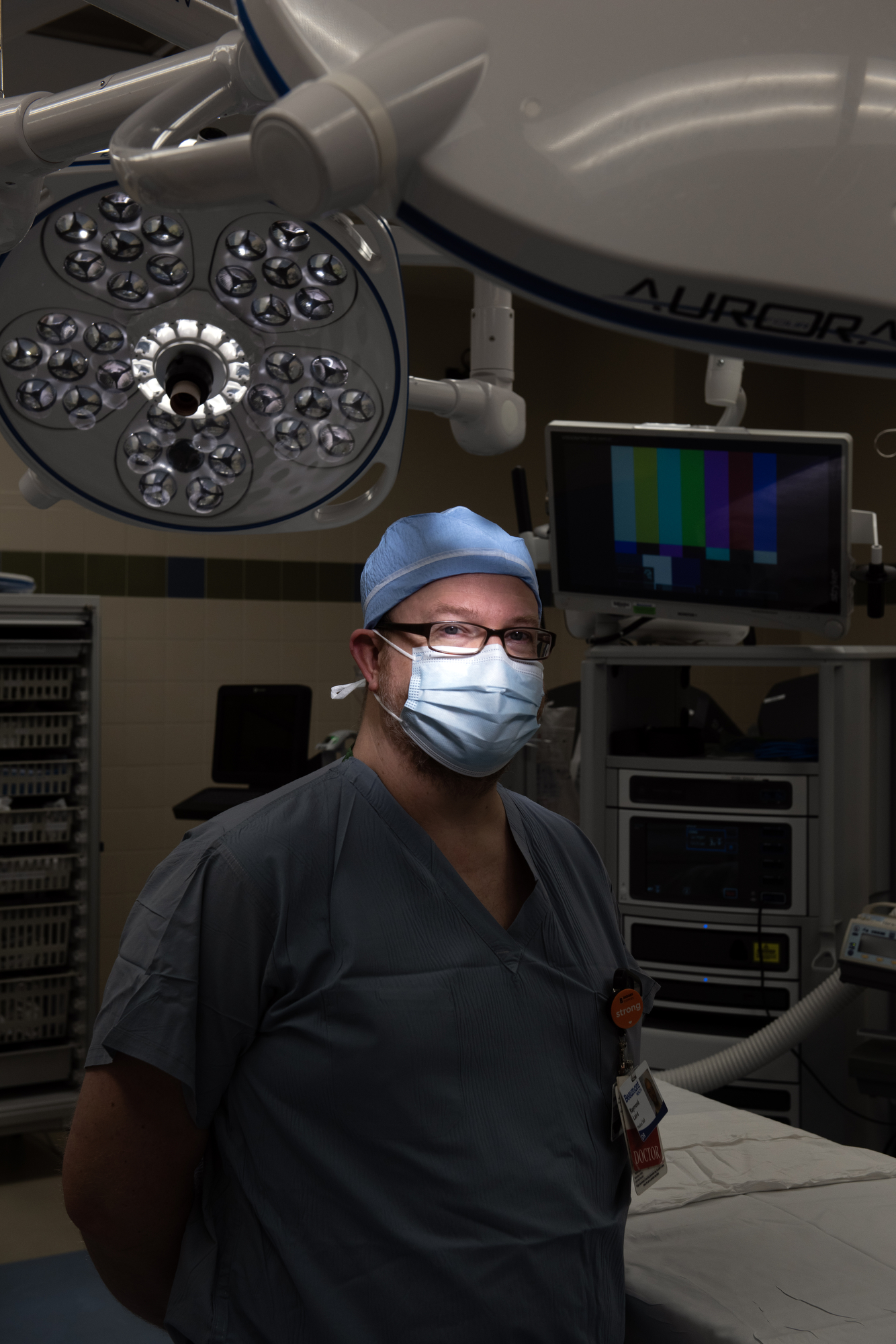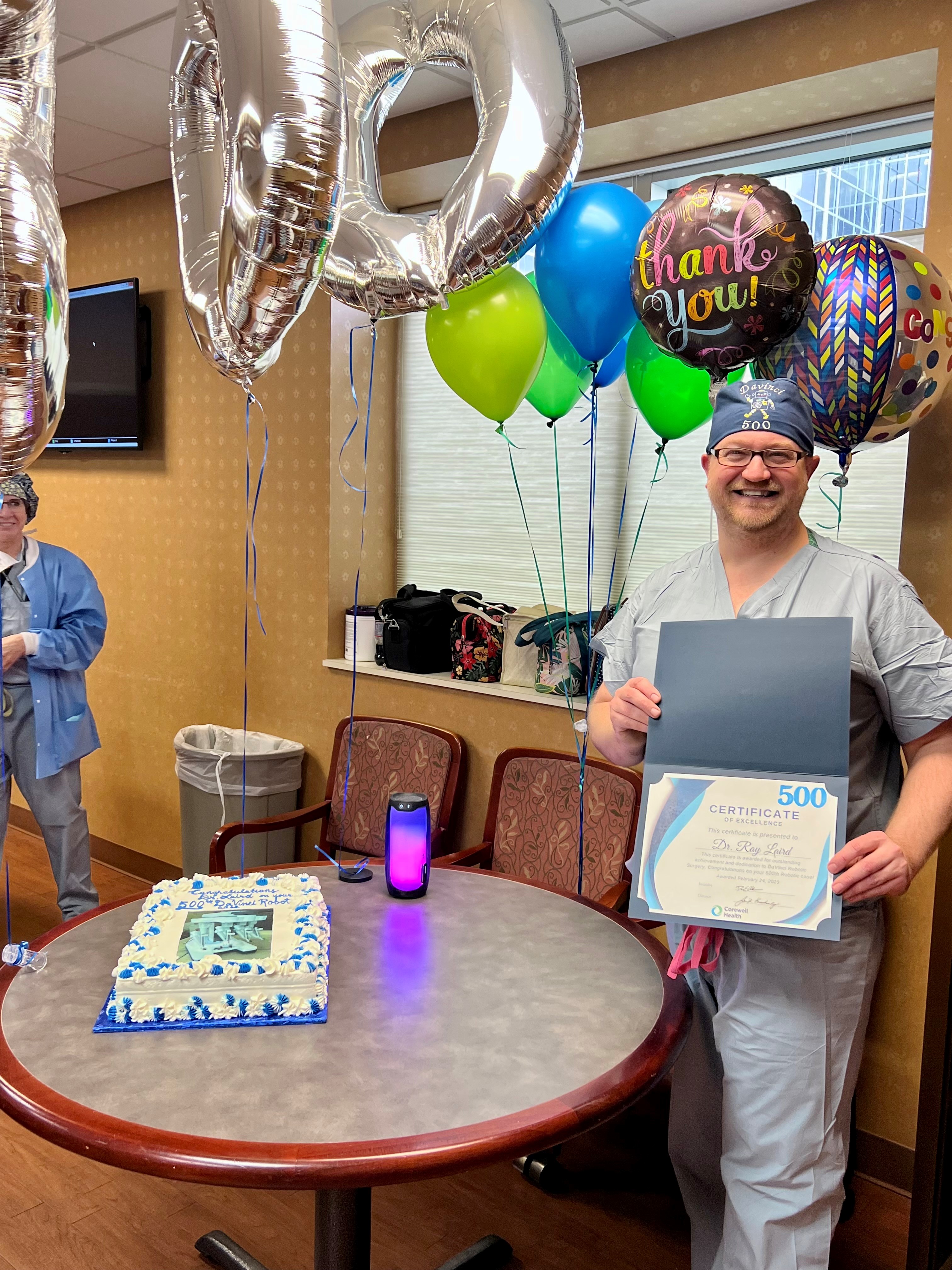How a doctor went from harvesting cotton to performing 500 robotic surgeries
Dr. Raymond Laird has had quite the journey from the farmlands of Missouri.

Not only was the doctor the first in his family to go to college, let alone medical school, he recently celebrated a personal accomplishment: his 500th da Vinci Robotic Surgical System operation with Corewell Health — something he never could have imagined while harvesting cotton as a 10-year-old.
“It's a big jump from having a dream to actually making that become reality,” said Dr. Laird.
Dr. Laird has affiliations at Corewell Health hospitals in Dearborn, Taylor and Wayne, but he primarily practices at Trenton where he cares for traumatically injured patients and serves as the assistant program director for General Surgery. The hospital’s halls ring with his unmistakable laugh while he greets almost everyone he meets.
In a past life, he worked with his dad for a farmer, raising crops like cotton, soybeans, wheat, rice and corn. When the farmer died of a heart attack, he started building houses for work, and he worked on a Christmas tree farm in college.
As he grew older, Dr. Laird’s dream was to be either a heart surgeon, an astronaut or an IndyCar driver. But when he started going to the University of Missouri, he studied accounting. Ultimately, he realized he wasn’t “cut out” for it.
“It was, how should I say it, it was boring,” he laughed.
He then pivoted and earned a bachelor's degree in Respiratory Therapy before heading to Florida for medical school at Lake Erie College of Osteopathic Medicine. He received nothing but support from his “super proud” family, but they didn’t understand how much of an undertaking medical school was.

“If you haven't gone to medical school, you truly don't understand the demand that it is,” said Dr. Laird.
He persevered and went on to complete residency in general surgery at Henry Ford Wyandotte Hospital where he met someone very important: his future wife, Dr. Cristen Laird, who’s also a physician at Corewell Health East.
He received fellowship training at George Washington University Hospital in Washington, D.C. in advanced minimally invasive surgery and has continued to advance his skills in complex open, laparoscopic and robotic hernia repairs, including da Vinci operations, which use four robotic arms to operate on patients.
When he hit his 500th da Vinci procedure, with the help of “Ursula” the robot, team members arranged a party with cake and balloons.
“There are not very many places, or very many people in the country, that have reached 500 cases yet,” he said. “So, there's not a whole lot of people that have hit that milestone.”
And he’s still got another 10 to 15 years in his career to go, he said.
“So, I'm hoping to hit that 2,000 mark,” he said.